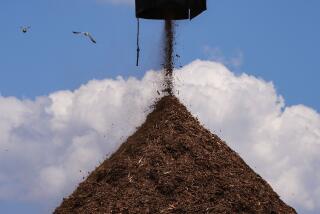U.S. cigarette consumption down, but use of other products is up
Sales of cigarettes in the United States are continuing to decline, but that decline is being partially offset by increases in the sales of loose tobacco and cigars, the Centers for Disease Control and Prevention said Thursday. Cigarette consumption fell 2.5% from 2010 to 2011, but the overall drop in tobacco consumption was only 0.8% because of an increase in the sale of other smokable tobacco products, the agency reported in its Morbidity and Mortality Weekly Report.
At least part of the alteration in consumption patterns arose because of a 2009 increase in the federal tobacco excise tax on cigarettes that made loose tobacco and cigars cheaper than cigarettes. Regulations prohibiting the addition of menthol and other additives to cigarettes are also less stringent for noncigarette products.
The CDC has not historically tracked cigarette sales -- that task fell to the U.S. Department of Agriculture. That agency stopped reporting consumption in 2007. CDC thus decided to take over the task because of the importance of smoking to Americans’ health. Smoking is the primary cause of lung cancer, as well as a major contributor to heart attacks, strokes and other diseases. Cigarette use and exposure to secondhand smoke kill an estimated 443,000 Americans each year, and for every death, an additional 20 live with a smoking-related disease. It is the only U.S. product that, if used according to the manufacturers’ directions, will kill half its consumers.
From 2000 to 2011, the agency reported, overall consumption of tobacco fell by 27.5%, from 450.7 billion cigarette equivalents to 326.6 billion. During that same period, however, the proportion of noncigarette combustible tobacco products increased from 3.4% to 10.4%. The largest increases were a 482% increase in pipe tobacco and a 233% increase in large cigars. Some of that increase reflected a simple change in labeling to avoid the excise taxes. Much roll-your-own tobacco, for example, was relabeled as pipe tobacco, which is taxed at a lower rate -- but the product continued to be marketed for making cigarettes. Similarly, some small cigars that were previously taxed as cigarettes were enlarged slightly to be classified as large cigars for tax purposes.
LATimesScience@gmail.com
Twitter/@LATMaugh






